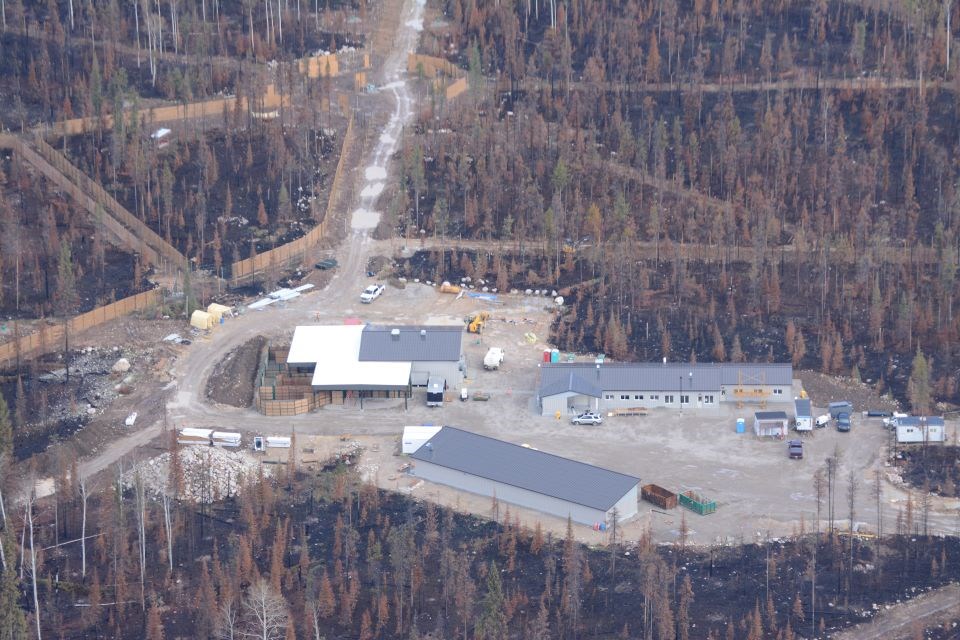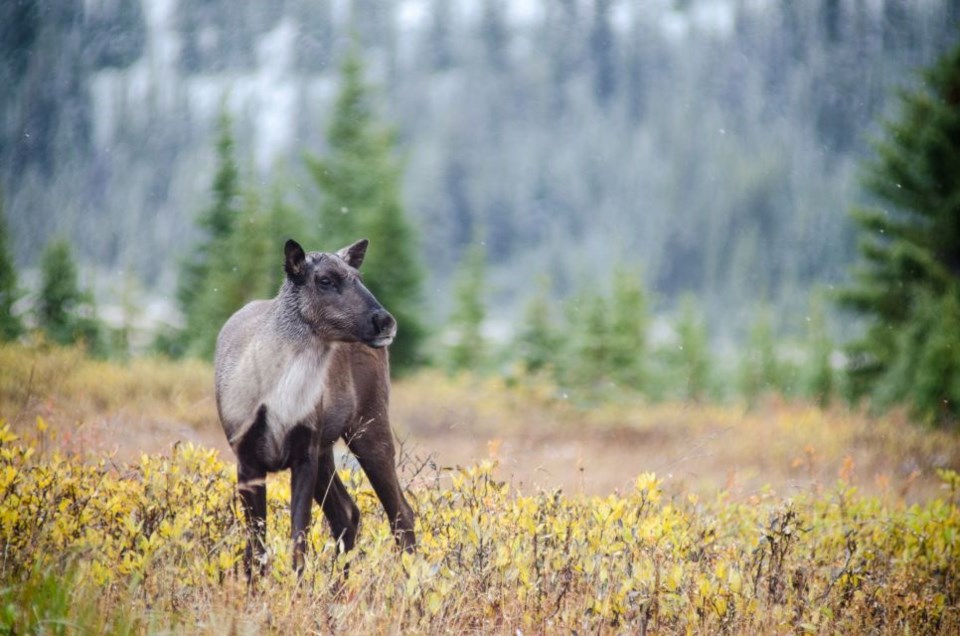Parks Canada is planning to start capturing caribou at the end of March for its breeding program, with the goal of restoring herds in Jasper National Park.
Jean-Francois Bisaillon, program manager of the Jasper Caribou Recovery Program for Parks Canada, said they would start by capturing the remaining Brazeau caribou to prevent their unique genetics and behaviour from disappearing.
“That would be a few females and a few males,” Bisaillon said. “The challenge is that we just collared a female in the Brazeau, so we might find a few more as we’re doing the additional surveys and we're proceeding with the capture.”
A capture helicopter will fly over a caribou for a short amount of time, and a net gun will be used to capture the animal. After a veterinarian administers a tranquillizer, the caribou would be fitted in a transport bag and carefully airlifted to the breeding centre where it would be assessed for health problems and get a reverse drug.
Bisaillon described this as a “well-known process” used by many other jurisdictions.
Jasper’s caribou herds have seen dramatic declines in recent years, with the Maligne herd deemed to be extirpated in 2018.
Due to the small number of breeding females, Parks Canada is planning to rebuild the Tonquin herd, and eventually the Brazeau and Maligne herds, by adding animals to the population through conservation breeding.
Bisaillon said they were hoping to get 25 to 35 females over the next two to five years. Parks Canada would start releasing males as early as 2026 and release females in the following years.
“Initially, we’re planning to probably keep the first few calves that will be born at the breeding centre just to help us build that breeding herd,” he said. “As soon as we’re in a position to release [breeding] females, we will do that.”
The caribou breeding facility, located south of the Jasper townsite, had been under construction since March 2023. While the wildfire impacted the site, the contractor was able to quickly resume operations following the fire, and most of the infrastructure was spared.

In terms of damage, a quarter of the fence posts were lost, and most of the vegetation within the facility was burned to some degree. Crews spent the fall planting trees and vegetation as well as replacing the fire-damaged infrastructure.
“We’re really pleased to report that the construction was substantially completed in December,” Bisaillon said, noting Parks Canada officially took possession of the facility on Dec. 20.
“We are now the owner of the caribou conservation breeding centre, and we’ve moved in with our own staff, and we’re slowly making sure the breeding centre is operational,” he added.
The breeding animals will be in one part of the facility and will be more habituated to human presence, which Bisaillon said would help decrease their level of stress. The other area will have the yearlings that Parks Canada plans to release into the wild.
“Because we want to release animals as wild as possible, that portion of the facility will be managed more with a bit of a hands-off perspective,” he said.
Bisaillon also highlighted the contributions of Indigenous partners, who were gathering lichen to help feed the captive caribou and were planning ceremonies in the coming weeks.
An independent expert panel has supported the breeding program, and while conservation groups agree captive breeding is necessary to restore caribou herds, they also emphasized the need for more stringent area closures. These would keep humans from making trails through the snow that could be used by wolves to prey on caribou.
Parks Canada has implemented a number of measures in the past, including speed zones on the Icefields Parkway. There are also winter closures in effect for the Tonquin, Brazeau and À la Pêche caribou ranges.
Bisaillon added they had a strong monitoring program in place to keep track of wildlife, including predators.
Parks Canada will prioritize recovering the Tonquin herd until it reaches 200 animals before turning its attention to the other two herds. The goal will be to reach 300 to 400 caribou among these three populations.
“Once we get there between 300 and 400 animals, then there might be an option at that point to decommission the whole program, but we're talking probably in 10 to 20 years, at least, from now,” Bisaillon said.




